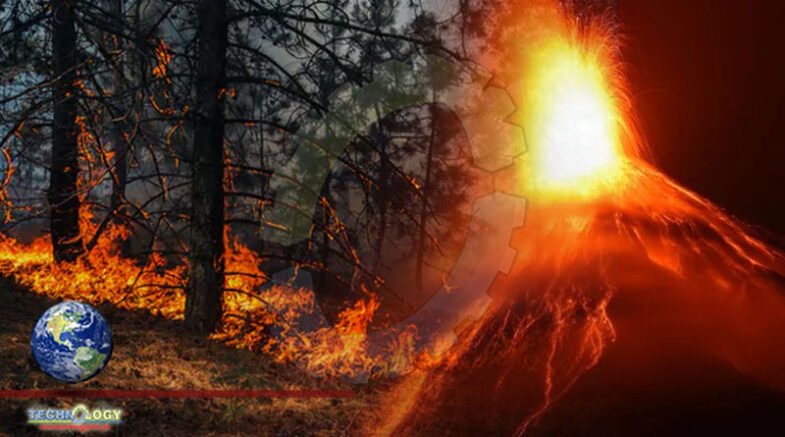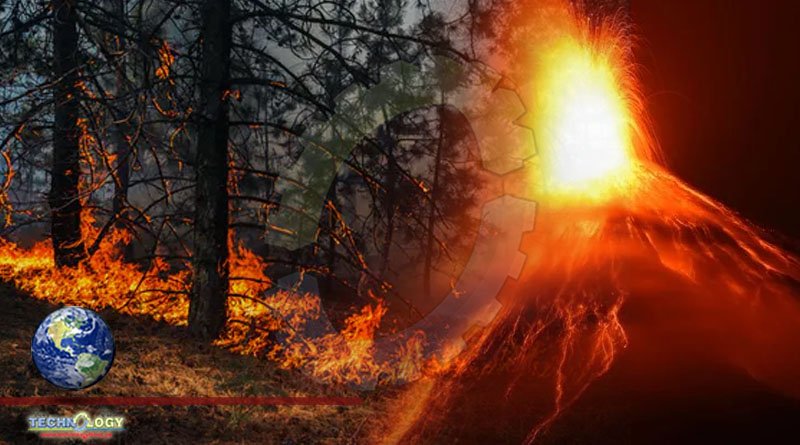The dangers of large-scale volcanic eruptions are very real: In the worst-case scenario, an extremely rare and powerful supervolcanic eruption might even devastate the planet.

The specter of terrifying volcanic eruptions is emblazoned in our imaginations from childhood: an earth-shattering explosion, followed by gushing bursts of lava and billowing smoke.
The dangers of large-scale volcanic eruptions are very real: In the worst-case scenario, an extremely rare and powerful supervolcanic eruption might even devastate the planet. But scientists now warn it wouldn’t even take such an extreme outburst to trigger a global catastrophe.
According to new research, much smaller-scale volcanic events can still unleash sufficient chaos to imperil the modern world.
“Even a minor eruption in one of the areas we identify could erupt enough ash or generate large enough tremors to disrupt networks that are central to global supply chains and financial systems,” says global risk researcher Lara Mani from the University of Cambridge.
“At the moment, calculations are too skewed towards giant explosions or nightmare scenarios, when the more likely risks come from moderate events that disable major international communications, trade networks, or transport hubs.”
Moderate eruptions might not seize our attention quite as much as their more thunderous counterparts, but they can wreak more havoc.
Case in point: the magnitude 6 eruption Mount Pinatubo in the Philippines in 1991 was approximately 100 times more powerful than the magnitude 4 eruption of Iceland’s Eyjafjallajökull in 2010.
But Eyjafjallajökull turned out to be most costly volcanic eruption in history, with a damage bill of US$5 billion to the global economy – whereas the losses from Mount Pinatubo’s far greater eruption were only a fraction of that (US$740 million in 2021, adjusted for inflation).
How is this imbalance possible? Mani and her team call it the ‘VEI-GCR asymmetry’: a new kind of paradigm where the danger of volcanoes (global catastrophic risk, GCR) doesn’t rise in line with the power of volcanoes (volcanic explosivity index, VEI).
Historically, assessments of volcanic risk have suggested that the more powerful a volcano’s eruptions, the greater a danger it presents in terms of global catastrophic risk: a relationship that can be called ‘VEI-GCR symmetry’.
But this might not be the case any more, as much of the world’s critical infrastructure today – including international shipping passages, submarine telecommunications cables, and aerial transportation routes – is not especially close to the volcanic regions that produce the most powerful eruptions (with a VEI of 7 or 8).
“We observe that many of these critical infrastructures and networks converge in regions where they could be exposed to moderate-scale volcanic eruptions (VEI 3-6),” the researchers write in their study.
“These regions of intersection, or pinch points, present localities where we have prioritized efficiency over resilience, and manufactured a new global catastrophic risk landscape.”
According to the team’s analysis, there are seven of these ‘pinch points’ around the globe, where critical infrastructure elements now lie dangerously close to VEI 3 to 6 magnitude eruptions.
These include Taiwan, which produces a huge amount of the world’s microchips, the global supply of which is jeopardized by proximity to the Tatun Volcanic Group (TVG).
In the US, moderate eruptions in the Pacific Northwest have the potential to disrupt trade and travel in both the US and Canada, causing massive economic harm.
Meanwhile, volcanoes in Iceland have the potential to create a pinch point in the North Atlantic, disrupting aerial traffic between London and New York, and causing serious delays for trade and transportation networks.
Other international pinch points, located in the Mediterranean and around Malaysia, threaten some of the world’s busiest shipping routes.
Another, located in the Luzon Strait, is a key route for underwater telecommunications cables connecting China, Hong Kong, Taiwan, Japan, and South Korea – all of which could be damaged by eruptions causing submarine landslides and tsunamis, causing severe disruptions to communications abilities and global financial markets.
These sorts of downstream consequences aren’t the first things that spring to mind when we think of the destructive power of volcanoes, but maybe they should be, the researchers suggest.
“It’s time to change how we view extreme volcanic risk,” Mani says.
“We need to move away from thinking in terms of colossal eruptions destroying the world, as portrayed in Hollywood films. The more probable scenarios involve lower-magnitude eruptions interacting with our societal vulnerabilities and cascading us towards catastrophe.”
Source Science Alert
